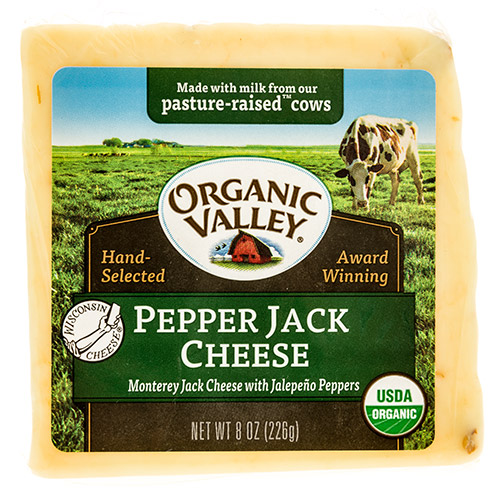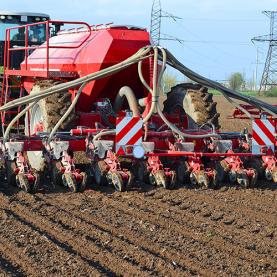Organic farming labels
Although organic labels are seen as a guarantee of product quality, they are often criticised. The wide variety of labels means they can be hard to understand, and not all producers can afford the costs of certification, especially in developing countries. In addition, importing organic products under bilateral agreements misleadingly puts products that meet different specifications on an equal footing.
The limitations of organic certification
Since the 1970s, organic products have been increasingly appealing to consumers, especially in Europe and the US. In order to prevent any abuse of this booming ‘organic’ market, there was a need for a standard, certification and control of organic farming, to guarantee that the actual products lived up to the claims made. Private organisations promoting organic farming designed production standards and certification procedures based on minimum standards drawn up by the International Federation of Organic Agriculture Movements (IFOAM). In the 1980-1990s, the authorities established ordinances at governmental level in Switzerland as well as at a European level, to support conventional producers as they converted to organic farming. Launched in 1993, the European law on organic production applied first to crops and then to livestock farming and aquaculture, as well as textile manufacturing, fodder plants and finally cosmetics at the end of the 1990s. At the same time, it inspired the development of regulations in other countries, such as in Japan, Canada and the US, as well as the drafting of guidelines for organic agriculture by the Codex Alimentarius Commission, which set the new benchmark for national ordinances and international exchanges.
Faced with the increasing number of labels, most western countries sought to reduce the costs of product control in order to promote international trade. They signed bilateral agreements that introduced a system of equivalence between labels and thereby ensured mutual recognition of the production and certification procedures for organic farming in the exporting country.
While organic product labelling is a guarantee of quality for consumers, it has faced three main criticisms. Firstly, an authorised organisation has to certify the products before producers can market and export them under an ‘organic’ label. This procedure incurs costs that many farmers in the world, and especially in developing countries, cannot afford. To help them export their products, non-governmental organisations (NGOs) create and award organic labels that meet a fixed and verified list of specifications. At the same time, some producers have set up their own 'organic' label with a participatory control system to promote local trade in organic products. This system involves consumers and other local producers in order to guarantee product quality.
The second criticism concerns imports of organic products under bilateral trade agreements. For example, when a product of organic farming in the United States is imported into the European Union, manufacturers can use both the European organic label and the American logo. This way of proceeding misleadingly puts products that meet different specifications on an equal footing. Consumers can only tell an American organic product from its European ‘equivalent’ by checking its place of origin printed on the packaging. The use of antibiotics in organic production is a good example of the limitations of equivalence here. There are no European organic meat products on the other side of the Atlantic because, unlike the EU, the US prohibits the use of antibiotics on organic farms. On the other hand, some conditions are less stringent than in the EU (no requirement for permanent access to an outdoor area, minimisation of transport time, etc.). On the contrary, in the US, farmers can treat diseased apples and pears with antibiotics as a last resort. In Europe, however, this is not the case, which is why no American organic apples are available on European stalls.
Lastly, the final criticism relates to what the general public knows about product labelling. Consumers rarely have access to specifications, and the coexistence on the market of diverse labels that meet more or less restrictive requirements only serves to increase confusion.
BIO COHERENCE, DATE ?. Grandes cultures et prairies [en ligne]. [Consulté le 29 mars 2017]. Disponible à l’adresse : http://www.biocoherence.fr/Grandes_cultures_et_prairies
BIO SUISSE, 2012. Différences entre le bio de l’UE, le bio fédéral et le Bourgeon au niveau transformation. [en ligne]. [Consulté le 29 mars 2017]. Disponible à l’adresse : http://www.bio-suisse.ch/media/VundH/unterschiede_knospe-bio_f.pdf
BIO SUISSE, DATE ?. Questions fréquentes concernant le label [en ligne]. [Consulté le 29 mars 2017]. Disponible à l’adresse : http://www.bio-suisse.ch/fr/labels.php
BOLIS, Angela, DAGORN, Gary, 2017. Comparateur : mieux comprendre les labels bios. Le Monde [en ligne]. 18 janvier 2017. [Consulté le 29 mars 2017]. Disponible à l’adresse : http://www.lemonde.fr/les-decodeurs/visuel/2017/01/18/comparateur-mieux-comprendre-les-labels-bios_5064859_4355770.html
COMMISSION EUROPÉENNE DE L’AGRICULTURE ET DU DÉVELOPPEMENT RURAL, 2017. Législation de l'UE sur la production biologique : présentation [en ligne]. [Consulté le 29 mars 2017]. Disponible à l’adresse : https://ec.europa.eu/agriculture/organic/eu-policy/eu-legislation/brief-overview_fr
CONSEIL DE L'UNION EUROPÉENNE, 2007. (CE) N°834/2007 : règlement relatif à la production biologique et à l'étiquetage des produits biologiques et abrogeant le règlement (CEE) n°2092/91 [en ligne]. 20 avril 2010. [Consulté le 29 mars 2017]. Disponible à l’adresse : http://eur-lex.europa.eu/LexUriServ/LexUriServ.do?uri=OJ:L:2007:189:0001:0023:FR:PDF
DORE, Thierry, 2013. Une agriculture en débat. In : Agriculture biologique : espoir ou chimère ? [en ligne]. Paris : Le Muscadier. [Consulté le 23 mars 2017]. Disponible à l’adresse : https://books.google.ch/books?id=wi-qDAAAQBAJ&pg=PT7&lpg=PT7&dq=d%C3%A9finition+agriculture+biologique+fao+codex&source=bl&ots=0et_ZIaaWT&sig=axlyMQxcjDXDvi0Jpq9ApbKhG6o&hl=fr&sa=X&sqi=2&ved=0ahUKEwjSs-qQ1OfSAhXJEiwKHY3OBAoQ6AEITTAJ#v=onepage&q=d%C3%A9finition%20agriculture%20biologique%20fao%20codex&f=true
EUROPEAN COMMISSION OF AGRICULTURE AND RURAL DEVELOPEMENT, DATE?. Organic Farming. Questions & Answers [en ligne]. [Consulté le 31 mars 2017]. Disponible à l’adresse : https://ec.europa.eu/agriculture/organic/sites/orgfarming/files/docs/body/organic_logo-faq_en.pdf
FABRÉGAT, Sophie, 2010. Bio Cohérence : un nouveau label, plus bio que bio ? Actu-environnement [en ligne]. 20 avril 2010. [Consulté le 29 mars 2017]. Disponible à l’adresse : https://www.actu-environnement.com/ae/news/label-bio-ecolabel-europeen-ab-bio-coherence_10076.php4
FAO, 2001. Ch. 1: Conditions réglementaires de production et d'exportation des produits biologiques vers les principaux marchés. In : Les marchés mondiaux des fruits et légumes biologiques [en ligne]. Rome : FAO [Consulté le 29 mars 2017]. Disponible à l’adresse : http://www.fao.org/docrep/004/y1669f/y1669f04.htm#TopOfPage
FAO, DATE ?, Questions fréquemment posées sur l'agriculture biologique [en ligne]. [Consulté le 13 mars 2017]. Disponible à l’adresse : http://www.fao.org/organicag/oa-faq/fr/
IFOAM, DATE ?. PGS General questions [en ligne]. [Consulté le 29 mars 2017]. Disponible à l’adresse : http://www.ifoam.bio/fr/pgs-general-questions
KOSOVSKA, Milica, 2013. Equivalence of organic food standards in the European Union and the United States of America [en ligne]. University of Tilburg. [Consulté le 31 mars 2017]. Disponible à l’adresse : http://arno.uvt.nl/show.cgi?fid=133406
MAY, Christopher, 2008. Petit guide des SPG. Ou comment développer et faire fonctionner les Systèmes participatifs de garantie. [en ligne]. Bonn : IFOAM. [Consulté le 29 mars 2017]. Disponible à l’adresse : https://shop.ifoam.bio/fr/system/files/products/downloadable_products/pgs_guidelines_fr_web.pdf
PERVANCHON, Frank, BLOUET, André, NGUYEN, Geneviève, SARTHOU, Jean-Pierre, FÉRET, Samuel, 2002. Lexique des qualificatifs de l'agriculture [en ligne]. Courrier de l'environnement de l'INRA. Février 2002. n°45. pp. 117-136. [Consulté le 16 mars 2017]. Disponible à l’adresse : https://hal.archives-ouvertes.fr/hal-01202642/file/C45Blouet.pdf
UNITED STATES DEPARTMENT OF AGRICULTURE, DATE?. Organic Labeling Standards [en ligne]. [Consulté le 29 mars 2017]. Disponible à l’adresse : https://www.ams.usda.gov/grades-standards/organic-labeling-standards
UNITED STATES DEPARTMENT OF AGRICULTURE, 2015. US-EU Organic Equivalency Arrangement [en ligne]. [Consulté le 31 mars 2017]. Disponible à l’adresse : http://www.usda-eu.org/trade-with-the-eu/trade-agreements/us-eu-organic-arrangement/
UNITED STATES DEPARTMENT OF AGRICULTURE, DATE?. International Trade Policies: European Union [en ligne]. [Consulté le 29 mars 2017]. Disponible à l’adresse : https://www.ams.usda.gov/services/organic-certification/international-trade/European%20Union









